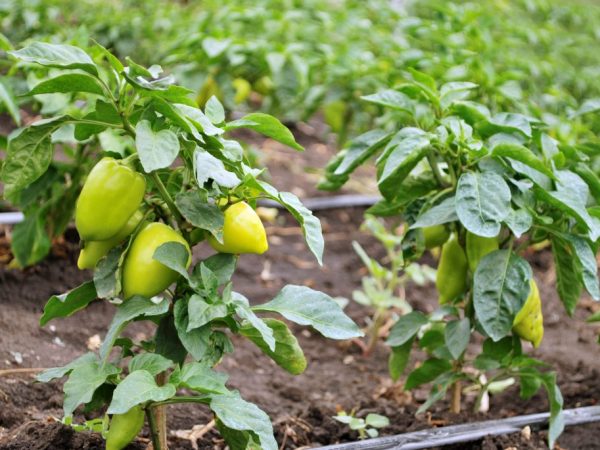Rules for the formation of pepper in the open field
A competent approach to planting garden plantings is the key to a high-quality harvest. Forming peppers in the open field is one of the most important procedures in growing a vegetable crop.

Rules for the formation of pepper in the open field
Why is formation necessary?
Formation is a process in which bushes of a selected variety are planted in open ground or in greenhouses with further pruning, pinching, and multiplication of stem elements. For this, an absolutely healthy plant is selected. Only tall and hybrid species are used, as when ripe they are able to give a bountiful harvest due to well-developed lateral shoots.
It is necessary to form the bell pepper in order to regulate the ground volume of the plant.
Benefits of the procedure:
- thanks to pruning, you can change the density of the bush;
- the main goal of formation is to create a strong stem with elastic shoots by cutting off all unnecessary branches and leaves;
- this is necessary so that all the necessary plant resources go to the formation and ripening of peppers, and not to a leaf weight mass.
After formation, fruiting occurs earlier. The quality of the fruit is also improved.
Formation process
Implementation of the forming process for sweet bell peppers or any other varieties is practically the same. The main thing is to choose the right vegetable seeds and follow the basic principles of growing.
Stage one
Work begins at the end of July in warm weather. Pepper is a single stem plant. It grows up to 20 cm, after which twigs appear. Where they form, the first flower appears - a crown flower. As soon as it appears, it should be removed immediately. If there are many flowers, you need to remove everything.
Stage two

Weak branches should be removed
With the appearance of the first 12 leaves, you should get rid of unnecessary branches. You can leave a few - those that formed from the fork of the first flower. Weak branches are cut off.
Everything that is left on the stem is called the first row shoots. They form the skeleton of a future adult bush.
Stage three
The sapling and skeletal weaving are monitored. A new slingshot with a bud is formed on each. It is necessary to choose the strongest shoot and pinch off all the rest until the first leaf.
Perform this procedure with further branching, because weak elements will retard plant growth and weaken it. The formed flower buds that appear at each fork will give rise to fruit ripening. It is normal for a tall species to have about 25 ovaries.
Other recommendations
In the course of the growth of the forks, all unnecessary leaves are removed. Especially those that create shadow. But you can remove no more than 2 leaves from 1 bush at a time.
Tips to follow when forming pepper bushes outdoors:
- The last time the leaves are cut off a month and a half before all the peppers are fully ripe. During this period, the seedlings remain dormant.Remember, you cannot use a dirty tool. After each pruning, it should be disinfected and not in contact with the diseased area.
- Pruning and pinching should be done in dry, calm weather. Under these conditions, the cut areas dry out faster and the green areas are not injured. If formation is carried out in wet weather or after irrigation, the risk of contamination increases.
- In order for the plant to produce a high-quality harvest with large fruits, some mistakenly leave many ovaries on it. This cannot be done - the bush will waste unnecessary energy on the development of these areas.
- It is allowed to leave up to 25 flowers on one seedling, which will bear about 18 fruits.
- Flowers in the last stages should be removed, because they will not increase the yield, but only weaken the ripe fruits. The final stage of formation involves the pinching of growth points on the main branches, after there are already a sufficient number of ovaries. The plant will feed the fruit juices. The result is that the peppers will be juicy, tasty and meaty.
When the bell pepper has grown, they begin to tie up and twist each free-standing plant next to a thin twig. If necessary, the fruits are turned inside out so that they are fed with a lot of light. Vegetable crops prepared in this way give several good harvests per season.
It is not recommended to use metal structures, because they can rust and oxidize vegetables.
Conclusion
It is not difficult to form peppers in the open field if the varieties are selected in accordance with the climatic conditions of the region. Stable feeding and irrigation, adherence to temperature and light conditions, and humidity levels will positively affect the formation of bushes.


